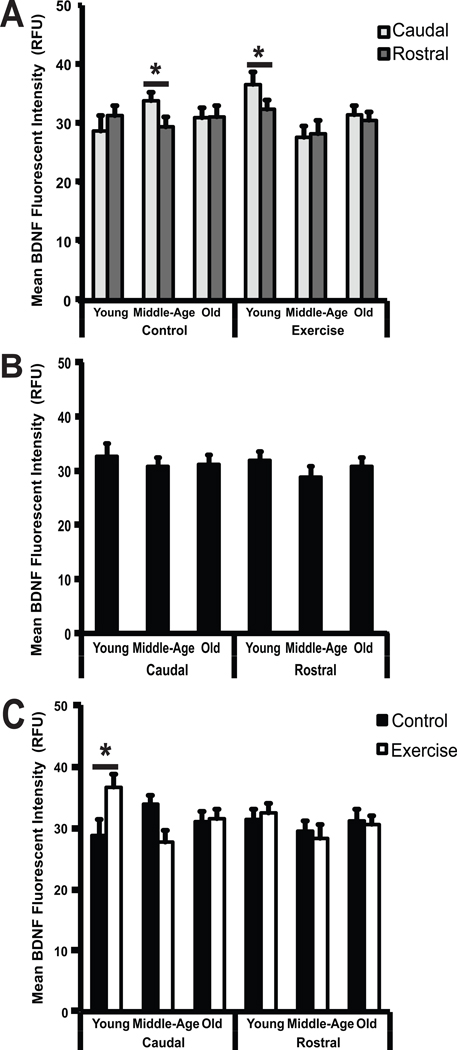Fig 3.
(A–C) Changes in BDNF immunoreactivity by region (A), age (B), and exercise (C). (A) Mean BDNF fluorescent intensity, expressed in relative fluorescent units (RFU), is represented along the vertical axis. Age groups (young, middle-age, and old), divided into control and exercise conditions, are represented along the horizontal axis. BDNF immunoreactivity in the caudal portion of the hypoglossal nucleus is shown in light gray and BDNF immunoreactivity in the rostral portion of the hypoglossal nucleus is shown in dark gray. A significant increase (p < 0.05) in BDNF immunoreactivity was seen in the caudal portion of the hypoglossal nucleus compared to the rostral portion of the hypoglossal nucleus in middle-aged animals in the control group, and in young animals in the exercise group. (B) Mean BDNF fluorescent intensity, expressed relative fluorescent units (RFU) is represented along the vertical axis. Age groups (young, middle-age, and old), divided into control and exercise conditions, are represented along the horizontal axis. No significant differences (p < 0.05) in BDNF immunoreactivity were seen across age groups in either the caudal or rostral regions of the hypoglossal nucleus (C) Mean BDNF fluorescent intensity, expressed in relative fluorescent units (RFU) is represented along the vertical axis. Age groups (young, middle-age, and old), divided into control and exercise conditions, are represented along the horizontal axis. A significant increase (p < 0.05) in BDNF immunoreactivity was seen in the young age group in the caudal portion of the hypoglossal nucleus with exercise. * denotes significant values; error bars represent standard error of the mean.

